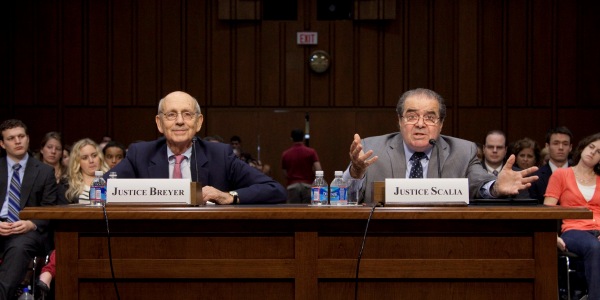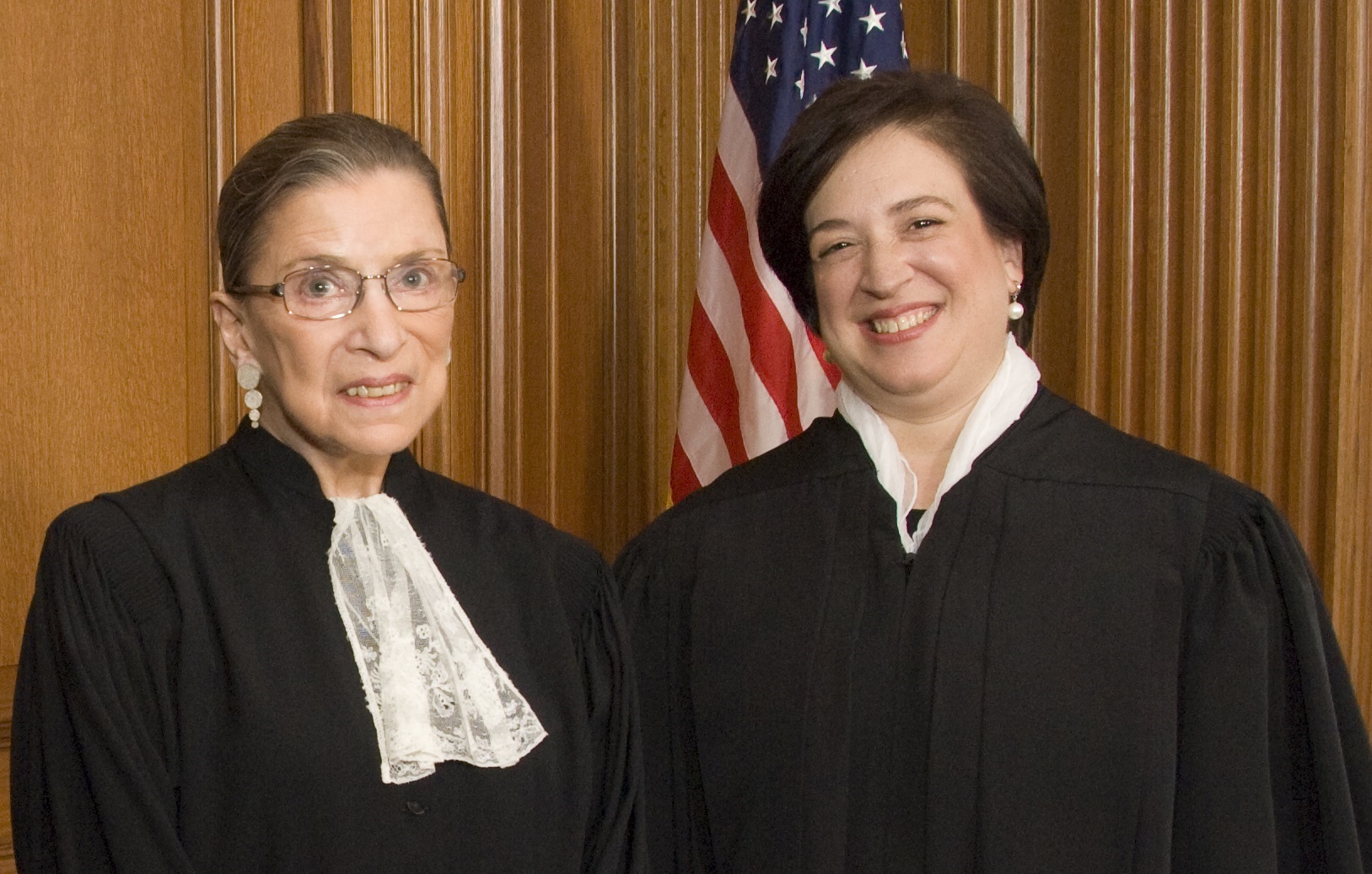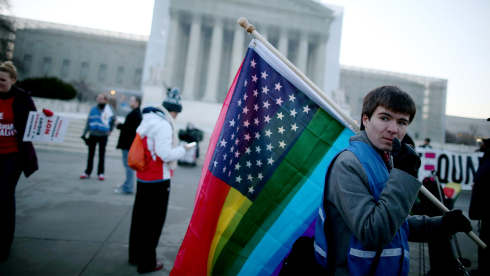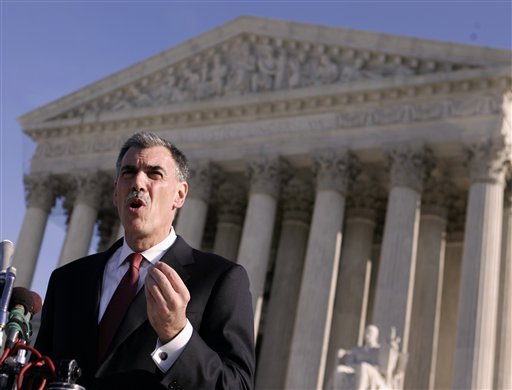With the election safely behind us — and, fortunately, without any controversy or recount in the offing — we can now pivot towards prognostications for the future. And no, not 2016. (Please, not for another two and a half years at the least.)
To that end, The First Casualty contributors Sam Lim, Mark McAdam, and Victoria Kwan have each weighed in with their thoughts on what to watch for — especially given their areas of interest — in the coming months and years. Feel free to join in the conversation in the comments!
Sam Lim: Higher Education

In his first term, President Obama worked to make higher education more affordable, shifting over $60 billion from private student loan providers to boosting the federal Pell grant program. In his second term, I expect that President Obama will continue pushing for maintaining — and hopefully increasing — Pell grant funding for students with financial need.
I expect further simplification of the process for applying for federal student aid. Changes to the Free Application for Federal Student Aid (FAFSA) over the past few years have made it immensely easier for students, but then-candidate Obama proposed even simpler solutions in 2008 (such as streamlining the FAFSA application process with the filing of tax returns).
Combined with the continued development of financial tools such as college price comparison calculators for students and families offered by the Consumer Financial Protection Bureau, I expect to see an effort to make processes like applying for aid or choosing the best type of loans even more transparent and accessible.
Of greatest concern are the skyrocketing costs of college tuition and rising student debt. As he mentioned in his 2012 State of the Union address, President Obama will work to ensure that colleges and universities are not pricing higher education out of range for most middle- and low-income students.
I would expect to see either financial incentives or sanctions for public colleges and universities to bring tuition down and keep it in check. If not proposed, I would at least expect these options to be strongly considered. I would also expect to see further initiatives to help students and graduates manage their debt, potentially through expanded loan forgiveness programs tied to public service and other high-need areas.
The Obama Administration seems to favor addressing educational issues most by incentivizing local solutions (more so in K-12, but also in higher ed), so I would fully expect to see more incentive-based programs and initiatives to encourage local level education reform through programs similar to Race to the Top or Innovation (i3) Grants. With jobs and economic growth a key focus, I expect areas that might be further targeted include community colleges, career and technical education, and college-to-career pipelines.
Without a doubt, given the little support for higher education demonstrated by Governor Romney, students and supporters of higher education should be hopeful that President Obama has four more years to continue working to make higher education an accessible opportunity for all students.
Samson Lim is the Executive Director of Seattle-based Scholarship Junkies, a scholarship resource organization that works to help students make higher education more affordable. Sam spent a year conducting ethnographic research on access to higher education in Berlin, Germany, as a 2010-11 U.S. Student Fulbright Scholar. Currently, Sam can be found buried in reading for his Masters of Education program in Politics and Education at Teachers College, Columbia University, although he emerges every once in a while to highlight higher ed and financial aid issues in 140 characters or less at @samsonxlim.
Mark McAdam: The (Indispensable) Republican Reformation
 “What a waste.”
“What a waste.”
It is more than likely that this was the sentiment Republican strategists awoke to on Wednesday morning, as they pondered the past 16 months on the campaign trail. “What a waste because–a sluggish economic recovery provided–it should have been so easy to beat Barack Obama on Tuesday.”
As pundits have begun offering their own explanations as to why Republicans failed to win back the White House on Tuesday, the Republican Party will have to reexamine its own platform if it hopes to remain electorally competitive and actually win future national elections. Below is an outline of four issue areas Republicans must address:
1) Same-sex marriage: 2012 is not 2004. Whereas opposition to gay marriage in 2004 actually helped bring out the vote and secured a second term for George W. Bush, public opinion on gay marriage has changed significantly in the past eight years. With 69% of voters under 30 years of age supporting gay marriage (not to mention 37% of Republicans between ages 18 and 29!), it hardly seems feasible to build a party platform around discriminatory policies which young people–i.e. those voting for the next sixty years–largely reject.
2) Immigration: The Republican primary process was a disgrace and provides clear evidence that a “race to the bottom” is possible in selecting a party’s nominee. On no issue was this as apparent as on how to deal with undocumented immigrants. With demographic trends suggesting that the United States is becoming less and less Caucasian, it should have been surprising that each candidate attempted to outperform the next in terms of alienating voters with an immigration background. (Or, for that matter, voters who know immigrants.) Wanting to cause conditions which would lead to “self-deportation” and endorsing ideas like that of an electric fence on the border does not only seem eerily un-American, but xenophobia is also bad politics in a demographically changing electorate.
3) Foreign Policy: The days in which neoconservative thought ruled Republican thinking on foreign policy seem over, yet instead of a competing paradigm emerging to replace it, Republicans face an intellectual void on foreign policy matters. (Admittedly, the same–i.e. an intellectual void–is also true for the Democratic Party.) Substantively meaningless, Republicans seem motivated to “be tougher than their opponents” on foreign policy, yet this reveals nothing about whether to intervene in Libya, how to respond to developments in Syria, or what the country’s relationship with Pakistan should look like. More importantly, there is no understanding–no vision–of what America’s role in the post-Cold War and post-9/11 world is or should be.
4) The Economy & The State: Likely the issue on which Republicans perform best, one is nevertheless forgiven to assume that the Republican answer to all economic matters is to deregulate and to cut taxes and government spending. Yet the assumption that the economic state of nature is one of harmony finds no credible support. Indeed, Republicans, who are only partially justified in purporting to be heirs of the free enterprise tradition, would do well to argue that the state can and must take on a positive role in a free enterprise framework: it must provide a legal framework, including oversight of markets; it must provide proper regulation; and it should push for legislation fostering competition. All of these ideas are entirely consistent with a free enterprise approach and, if put into place properly, do not lead to a path towards socialism.
Republicans mistakenly hoped that unemployment at 7.9% would suffice to win the White House. But without altering their rigid party platform and making it more amenable to the electorate as a whole, Republicans could lose many more national elections.
Mark McAdam is a football guru. When he’s not writing about the Bundesliga, he advocates on behalf of free societies. He has a Master’s degree in “Politics, Economics & Philosophy” and studied at the University of Hamburg’s Institute for Economic Systems, the History of Economic Thought and the History of Ideas.
Victoria Kwan: The Federal Judiciary
 How much will Barack Obama’s re-election affect the composition of the Supreme Court? Looking at current circumstances, the answer is “not much.” Right now, there are three Supreme Court justices over the age of 75: Ruth Bader Ginsburg (79), her best friend Antonin Scalia (76), and Anthony Kennedy (76). Of the three, Justice Ginsburg is the most likely to retire in the coming four years. The Brooklyn native is tough as nails–she has already weathered two bouts of cancer (while barely missing any work) and the death of her husband in her 19 years on the Court, and her mind remains as sharp as ever–but given her health history, her age and her liberal stance, it would not be surprising at all if she stepped down and gave a Democratic administration the chance to fill her place. President Obama would surely replace Ginsburg with a moderate to liberal justice who would preserve the current balance on the Court (four conservatives, four liberals and one swing vote).
How much will Barack Obama’s re-election affect the composition of the Supreme Court? Looking at current circumstances, the answer is “not much.” Right now, there are three Supreme Court justices over the age of 75: Ruth Bader Ginsburg (79), her best friend Antonin Scalia (76), and Anthony Kennedy (76). Of the three, Justice Ginsburg is the most likely to retire in the coming four years. The Brooklyn native is tough as nails–she has already weathered two bouts of cancer (while barely missing any work) and the death of her husband in her 19 years on the Court, and her mind remains as sharp as ever–but given her health history, her age and her liberal stance, it would not be surprising at all if she stepped down and gave a Democratic administration the chance to fill her place. President Obama would surely replace Ginsburg with a moderate to liberal justice who would preserve the current balance on the Court (four conservatives, four liberals and one swing vote).
Now, if either Justice Scalia or Justice Kennedy were to step down, Obama would have the opportunity to put together a five-liberal majority bloc. Barring a serious health issue, however, this isn’t likely to happen. Scalia accumulated quite a list of furious dissents before finally seeing a five-conservative majority coalesce under George W. Bush’s administration, and he relishes his position as the anchor of the Court’s conservative wing too much to voluntarily give up his seat. Meanwhile, despite all protestations to the contrary, Kennedy seems to greatly enjoy his current role as the swing vote. Their job satisfaction and apparent good health mean that Citizens United–the ruling that the Democrats would most like to see SCOTUS overturn, and hence, the liberal equivalent of Roe v. Wade–will remain intact for at least the next four years. On the other hand, Obama’s re-election also means that Roe continues to be safe for now.
Beyond the Supreme Court, there is the question of the re-election’s impact on the rest of the federal judiciary. George W. Bush made the appointment of young conservative judges a top priority in both terms, filling a total of 325 federal judgeships over eight years. So far, Obama has appointed 160 (which is behind the pace Bush and Clinton set in each of their first four years). The rate at which Obama has been able to fill judicial vacancies has been slow to say the least, creating judicial emergencies in some understaffed and overworked courts. Part of the reason for this is Republican obstructionism. As Slate reported in September, citing studies from the Congressional Research Service, even the uncontroversial Obama nominees have seen their confirmation times (the number of days between nomination and confirmation) jump up sharply compared to Bush’s nominees. None of Obama’s nominees to federal appeals courts have been confirmed in under 100 days, while 28.6% of Bush’s were.
But the blame does not rest solely on the Republican party: Obama himself has not made the appointment of judges a top priority in the same way Bush did. He has moved slowly to even name candidates–many of the current vacancies don’t even have nominees to vote on–and when he does nominate, Obama more often than not chooses moderates over outspoken liberals. And of course, in this past election cycle, the federal judiciary was barely discussed by the Obama campaign. One optimistic explanation (for liberals, that is) for Obama’s moderate first-term approach could be that he had re-election in mind, and can now nominate liberal judges at a much faster and more aggressive clip. But the likelier explanation is that, as Jeffrey Toobin writes, Obama simply does not see the courts as the most appropriate place to enact widespread social change, preferring to problem-solve through the legislative arena.
Bottom Line: when it comes to the courts, we should expect to see more of the same.
Victoria holds a J.D. from Columbia Law School in New York and has recently completed a clerkship with a judge in Anchorage, Alaska. She tweets as @nerdmeetsboy and posts primarily on legal issues, especially those involving the Supreme Court.










 “What a waste.”
“What a waste.” How much will Barack Obama’s re-election affect the composition of the Supreme Court? Looking at current circumstances, the answer is “not much.” Right now, there are three Supreme Court justices over the age of 75: Ruth Bader Ginsburg (79), her best friend Antonin Scalia (76), and Anthony Kennedy (76). Of the three, Justice Ginsburg is the most likely to retire in the coming four years. The Brooklyn native is tough as nails–she has already weathered two bouts of cancer (while barely missing any work) and the death of her husband in her 19 years on the Court, and her mind remains as sharp as ever–but given her health history, her age and her liberal stance, it would not be surprising at all if she stepped down and gave a Democratic administration the chance to fill her place. President Obama would surely replace Ginsburg with a
How much will Barack Obama’s re-election affect the composition of the Supreme Court? Looking at current circumstances, the answer is “not much.” Right now, there are three Supreme Court justices over the age of 75: Ruth Bader Ginsburg (79), her best friend Antonin Scalia (76), and Anthony Kennedy (76). Of the three, Justice Ginsburg is the most likely to retire in the coming four years. The Brooklyn native is tough as nails–she has already weathered two bouts of cancer (while barely missing any work) and the death of her husband in her 19 years on the Court, and her mind remains as sharp as ever–but given her health history, her age and her liberal stance, it would not be surprising at all if she stepped down and gave a Democratic administration the chance to fill her place. President Obama would surely replace Ginsburg with a